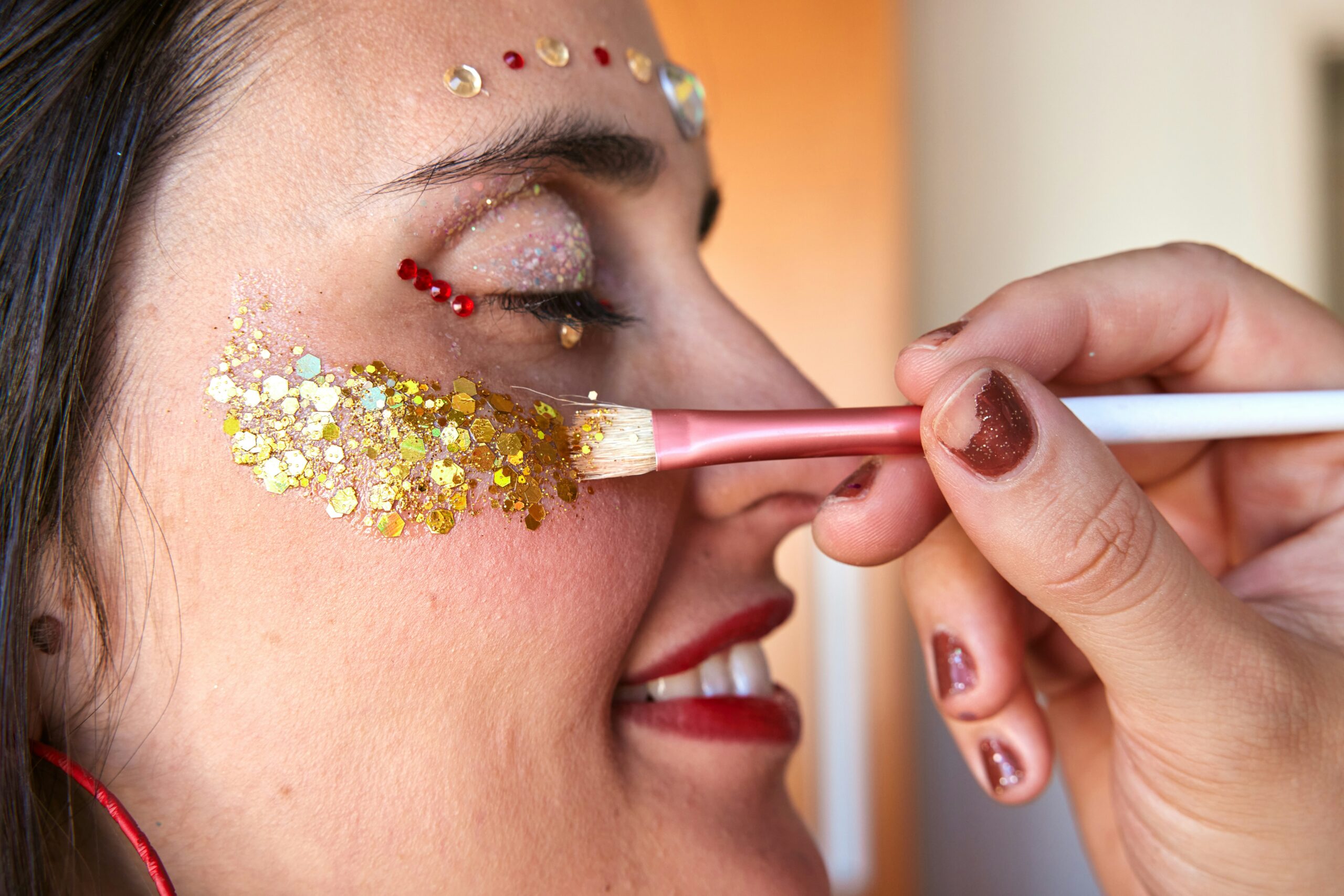Vaginal birth is a powerful and transformative experience that many women look forward to throughout their pregnancy. And even if you’re not exactly counting down the days to give birth—you may at the very least, be curious about your body and its ability to birth a baby. Many women feel strong and well, badass, after giving birth (as they should).
But the recovery process? It’s not easy in the slightest.
After your baby arrives, your focus shifts towards caring for your newborn. While that’s not a bad thing, your vaginal birth recovery should not be an afterthought. Just like you gave your body TLC throughout those (long) 40 weeks of pregnancy, it deserves the same attention and care postpartum. The raw reality of vaginal birth recovery often comes with discomfort, fatigue and emotional highs and lows that can be hard to navigate if you don’t know what you’re up against.
In the following days—and weeks—after you give birth, your body is doing its best to heal. While you have to adjust to an entirely new routine—and by “routine” we mean never sleeping through the night and having to rely on a five-minute shower—you should also be trying your best to squeeze in some time to focus on your recovery.
Labor is an incredibly beautiful but taxing process, and every mom’s experience is different. Beyond the physical aspects, the emotional side often gets overlooked. Your hormones are all scrambled up, you’re surviving on no sleep while keeping a human alive 24/7—and the toll your body has taken is stressing your brain out.
So how do you manage a vaginal birth recovery? Here, we explore what to expect during vaginal birth recovery, from physical healing to the emotional journey, with insights from medical professionals and mothers who have been through it.
- What Happens Immediately After Vaginal Birth?
- Physical Aspects of Vaginal Birth Recovery
- The Emotional Side of Recovery
- How Long Does Vaginal Birth Recovery Take?
- Tips for Easing Vaginal Birth Recovery
- The Role of Pelvic Floor Health in Recovery
- When to Seek Medical Attention
- Embracing Your Recovery Journey
What Happens Immediately After Vaginal Birth?
Immediately after vaginal birth, it might feel like a whirlwind of things are happening around you. Here are a few things you can expect and prepare for. Depending on where you give birth (at home, a birthing center or the hospital), these may look a little different but generally speaking, you can anticipate:
Post-Birth Care
While you’re enjoying your first skin-to-skin moments with your baby, your healthcare team is taking care of your body. The first hour often includes monitoring for bleeding after birth, stitching any perineal tears, and administering pain relief if necessary.
“Immediately after the baby is out, a few things happen: your placenta will come out, your uterus will be massaged and you will be given medication, pitocin, to help your uterus contract down and prevent excessive bleeding,” Dr. Jessica Vernon, MD, PMH-C, a board-certified OB/GYN, said. “If you have any tearing with your birth, your provider will close the tear with sutures.” This may sound scary, but your healthcare team got you through childbirth, and they’ll help you get through the aftermath.”
If you have an epidural, your nurse will remove your catheter and before you are led to the mom or baby room to recover and settle in for your stay, you have to urinate on your own. During this time, you might also feel cold or experience shakes, known as the postpartum chills.
The “Golden Hour”
The period right after birth is known as the “Golden Hour.” This is the time for you and your baby to bond with skin-to-skin contact, which promotes attachment and helps your baby adapt to life outside of your womb. You might have also heard this called Kangaroo Care. These first few magical moments are for you and your baby. We know delivering your little one was no walk in the park, so bond with your baby during this time. However, you should also be aware of your body’s physical changes. Your hormones are shifting all over the place, your uterus is beginning to contract and you may have medical professionals working on your vaginal area. If you decide to breastfeed your baby, a nurse or your doula may help you with your first latch.

Physical Aspects of Vaginal Birth Recovery
We’ve briefly mentioned some of the physical symptoms and issues that arise during vaginal birth recovery. Now, let’s dive deeper into what may happen and how to manage pain or discomfort.
Perineal Pain and Tears
During childbirth, your perineal may tear. This is the area of skin between your vagina and anus, which can be stretched and ripped while you give birth. However, if this happens, your doctor will apply stitches, which will typically dissolve after a few weeks. It’s normal to feel a bit of pain or discomfort if your perineal is torn. To manage this, you can hold an ice pack on it to reduce pain and swelling, put a pillow under you when you sit, place a witch hazel pad in your underwear, spray and rinse your perineal with warm water or use over-the-counter medication. If the pain is unbearable, don’t hesitate to reach out to your doctor.
Swelling and Bruising
After you give birth, swelling in the vaginal area or bruising can occur. But, it’s completely normal, especially if labor was long or involved forceps or vacuum delivery. Your vagina might be sensitive to the touch or feel uncomfortable if you have something rubbing against it, like tight clothing. To help this, wear loose, comfortable clothing until your swelling reduces. You can also use perineal sprays to help alleviate discomfort.
Postpartum Bleeding (Lochia)
Now let’s get into the nitty gritty of postpartum, lochia. Lochia is the vaginal discharge you have after you give birth. It’s a mix of mucus, uterine tissue and blood. It’s similar to a heavy period and gradually lightens over time. It might have a slight odor, like period blood, but it’s a normal part of the postpartum process. The amount of time you bleed will vary for everyone, but for most women, it’s anywhere from one to six weeks. While you’re staying at the hospital, a nurse will visit your bedside every two to three hours and push firmly down on your uterus to encourage it to start the shrinking process back to its normal size. This can be uncomfortable and painful, and usually, results in some bleeding, but it’s an important part of the healing journey. Bleeding after birth should steadily decrease but seek medical care if you see constant heavy clots or a sudden increase in blood flow occur.
The Emotional Side of Recovery
Vaginal birth recovery is not just physical—it also has significant emotional and psychological components. While the emotional side of vaginal birth recovery is often underscored, we want to make sure you’re prepared.
Hormonal Shifts and Mood Swings
Right after birth, your estrogen and progesterone levels decrease, which leads to what is commonly known as the “baby blues.” It’s estimated 70 to 80 percent of mothers face the baby blues, which are negative feelings or mood swings after birth. If you have the baby blues, you might feel like you’re crying for no reason at all, feel irritable, have anxiety or overall, feel sad. All of these feelings are normal, and it’s common to feel overwhelmed. In fact, this is the single most significant hormone shift you’ll face other than menopause. But persistent feelings of sadness or anxiety should be discussed with a healthcare provider.
With baby blues, these feelings level out within the first few weeks. Postpartum depression or anxiety is when these feelings persist for months or years and are more intense than baby blues.
Bonding with Your Baby
A big part of the vaginal birth recovery process is bonding with your baby. Bonding with your newborn can be both joyful and challenging, especially if recovery is difficult. It’s important to remember that for some moms, this bond doesn’t happen instantly. “I always like to let parents-to-be know that you may immediately fall in love with your baby, but it is also very normal to feel a full range of emotions—you may be in shock, curious, overwhelmed, intrigued, or just feel a huge sense of responsibility.It is very normal to take time to get to know your baby and fall in love with them over time,” Dr. Vernon explained.

How Long Does Vaginal Birth Recovery Take?
Remember, recovery for every mother is different. Some women might feel better sooner than others. But here’s a general timeline of what you can expect.
First Two Weeks
“Even if you do not have any tearing, the first few weeks involve a lot of swelling and discomfort or pain just from the pregnancy, labor and birth,” Dr. Vernon said. “Many new parents are surprised that it still hurts to sit, they had urinary incontinence, painful uterine cramps and developed hemorrhoids for a while after birth— even if they had a beautiful experience during the birth.”
It is normal to experience soreness, fatigue, and significant bleeding. During these first two weeks, focus on your rest and self-care. We know it’s challenging, but try to get as much sleep as possible, drink plenty of water and eat a balanced diet. Follow all the guidance your healthcare provider gives you!
First Six Weeks
After six weeks, most women will start to feel at least a bit better. Most feel significant improvement, though some symptoms like mild discomfort and fatigue may linger. But, that’s totally normal. Around six weeks, you’ll also head in for your postpartum checkup, during which your healthcare provider will check in on your recovery progress, usually including a perinatal mental health assessment and a physical exam. Here, you can address any concerns you have and get reassurance that you’re headed in the right direction.
Full Recovery
Full vaginal birth recovery can take up to months, especially if you experienced tearing or complications during your birth. “You will not ‘bounce back’this is a myth. Your pelvic floor and abdominal core have a long road ahead and may never return to how they were prior to giving birth,” Dr. Vernon said. “I encourage new parents to treat their body with grace during this time and note the things you can do that you couldn’t do during pregnancy—like lie flat on your back or take a deep breath.”
Don’t rush recovery! Everyone’s timeline is different. While your sister-in-law might feel back to normal after six weeks, it’s fine if you feel like you’ve barely changed. Take your time.
Tips for Easing Vaginal Birth Recovery
Vaginal birth recovery takes time. But there are plenty of ways you can make the process easier for your body. From extra rest and sleep to postpartum supplies, you can help your body through recovery.
Rest and Sleep
You’ve probably heard this phrase by now, but when the baby sleeps, you sleep! Fatigue can slow healing, so get as much sleep as you can. Even if you can’t sleep during the night, try taking short naps when you can during the day. Give yourself permission to rest. We know you want to do everything for your baby but don’t be afraid to ask for help so you can take some time to rest. Lean on your partner and support network during this time.
Use Postpartum Supplies
Before you give birth, while you’re stocking up on diapers, bottles and baby clothes, also stock up on postpartum essentials like pads, perineal sprays, ice packs and comfortable, loose clothing. You can also get things like mesh underwear and peri bottles to help with your bathroom visits. Having these items on hand will make your recovery easier and promote healing.
Stay Hydrated and Nourished
Drink, drink, drink up! Drink water like it is your job too, especially if you’re breastfeeding. Also, don’t forget to eat nutrient-rich meals that can support recovery. Get in plenty of veggies, fruits and proteins to give you the energy you need and the nutrients your body needs for recovery.
The Role of Pelvic Floor Health in Recovery
Pelvic floor recovery is a vital aspect of vaginal birth recovery that is often overlooked. Here’s what you can do for your pelvic floor.
Importance of Pelvic Floor Exercises
“The pelvic floor plays a vital role in vaginal birth recovery by supporting pelvic organs and contributing to urinary, bowel and sexual function. Injury to the pelvic floor during a vaginal birth can lead to various dysfunctions, bowel and bladder issues, pelvic pain and heaviness and sexual discomfort. However, early re-engagement with pelvic floor muscles in the postpartum period can significantly help with recovery by decreasing inflammation and improving blood flow to the pelvic area, which supports healing,” Ashley Rawlins, PT, DPT, a pelvic physical therapist and Clinical Specialist at Origin, said.
Rawlins explained that under the guidance of a pelvic physical therapist, you can do gentle exercises to help aid your pelvic floor. You can do light kegel exercises which will help restore muscle strength.
When to See a Specialist
If you experience ongoing pain, discomfort, or issues like incontinence, you should seek help from a pelvic floor specialist for a personalized recovery plan. Pelvic floor specialists can help guide you through exercises, stretches and treatment plans specifically designed for your body and lifestyle.

When to Seek Medical Attention
As you navigate your vaginal birth recovery, it’s important to know when something isn’t right and when to consult your healthcare provider. Remember, it is always better to be safe than sorry.
Signs of Infection or Complications
If you’re experiencing anything like a fever, a constant headache, lower abdominal pain, foul-smelling discharge or extreme pain around your vaginal area, it could be signs of an infection. Heavy bleeding after birth, large clots or severe pain may also indicate potential complications that need immediate medical attention.
Mental Health Concerns
We touched on the baby blues earlier, but oftentimes, many new mothers mistake postpartum depression or anxiety for baby blues. If you’re struggling with constant sadness or you’re having an extra hard time bonding with your baby, you could have PPD or PPA. Reach out to your healthcare provider for help. Remember, mental health is just as important as your physical health.
Embracing Your Recovery Journey
We understand it can be difficult to navigate your vaginal birth recovery. It’s easy to compare yourself or feel like your body is not healing fast enough. Here’s how to embrace your recovery journey.
Give Yourself Grace
Dr. Vernon recommends that new parents not go on social media to envision or compare their recovery. “Social media is so damaging as it can set unachievable expectations, often showing birthing parents weeks after giving birth going back to their normal physical activity or showing their body that looks as if they never gave birth. This may be the case for a very few of you, but it is not what you should expect,” she explained.” Do not feel like a failure or like there is something wrong with your body if the recovery is a struggle for you.”
Listen to your body and take things at your own pace.
Lean on Your Support System
During your recovery, don’t hesitate to ask for help from family, friends, or professionals. Recovery is tough, and you don’t have to do it alone. Your support system wants to help you. Whether it’s grabbing you some postpartum essentials or grocery shopping, they want to do anything for you to ease your recovery journey.
Vaginal birth recovery is tough and it’s so much harder than many women expect. From postpartum hormones to perineal tears, remember to take care of your body. Give yourself time and patience to heal and always reach out to your healthcare provider if you’re ever concerned. With the right education and approach, you can get through your vaginal birth recovery—one step at a time.
Author
-

Esha Minhas is a third-year student at Northeastern University studying Journalism and Political Science. She's currently the editorial and social intern for Mila & Jo Media. Esha is also the Deputy Sports Editor for The Huntington News and covers Northeastern men's hockey. When she's not busy with work or school, you can find her at the gym, baking for her friends and family and watching anything sports related.
View all posts




